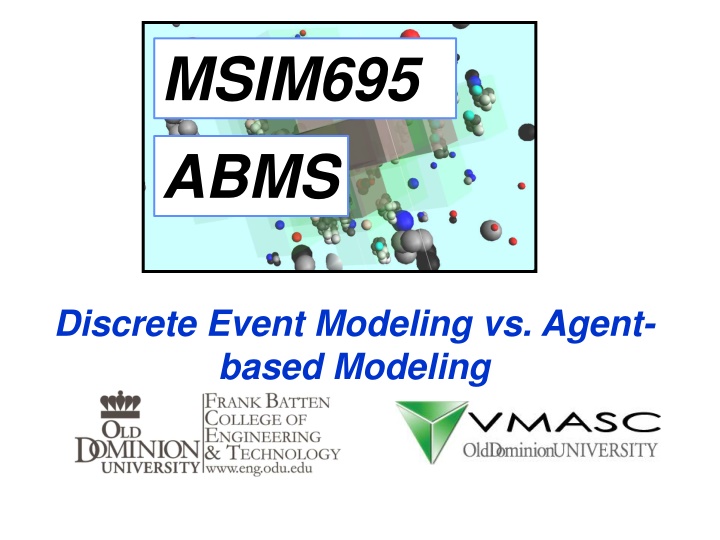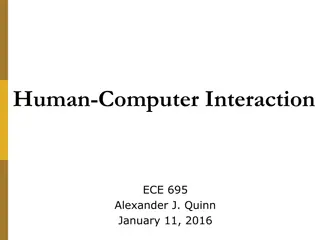
Discrete Event Modeling vs. Agent-Based Modeling: A Comparative Analysis
Explore the differences between discrete event modeling and agent-based modeling in this informative presentation. Discover how these modeling approaches vary in defining system behavior, individual autonomy, and global outcomes, with real-world examples and accompanying research paper. Understand the nuances of queuing simulations under both methodologies and delve into the practical applications of agent-based modeling.
Uploaded on | 4 Views
Download Presentation

Please find below an Image/Link to download the presentation.
The content on the website is provided AS IS for your information and personal use only. It may not be sold, licensed, or shared on other websites without obtaining consent from the author. If you encounter any issues during the download, it is possible that the publisher has removed the file from their server.
You are allowed to download the files provided on this website for personal or commercial use, subject to the condition that they are used lawfully. All files are the property of their respective owners.
The content on the website is provided AS IS for your information and personal use only. It may not be sold, licensed, or shared on other websites without obtaining consent from the author.
E N D
Presentation Transcript
MSIM695 ABMS Discrete Event Modeling vs. Agent- based Modeling
Outline Discrete Event Modeling vs. Agent-Based Modeling Introduction Differences Example Accompanying paper MSIM 695: ABMS jsokolowski@odu.edu & ajcollin@odu.edu
Introduction Discrete Event Modeling modeling approach based on the concept of entities and how they change state due to a series of events that occur. State transitions are precisely defined for a given set of inputs. Agent-based modeling modeling approach based on the evolution of a system due to the autonomous behavior of agents over time. MSIM 695: ABMS jsokolowski@odu.edu & ajcollin@odu.edu
Differences Agent-based models are decentralized. There is no place in an agent-based model where global system behavior is defined. The modeler defines behavior at the individual level and the global behavior emerges as a result. This is in direct contrast to discrete event modeling where global behavior is specifically defined. MSIM 695: ABMS jsokolowski@odu.edu & ajcollin@odu.edu
Example Let s take a queuing example. Queues are often modeled by discrete event models with arrival, service, and departure events characterized by specific statistical distributions. Agents arrive, move, and depart the queue based on when these events occur. The global behavior of the model is completely described by these distributions and events. MSIM 695: ABMS jsokolowski@odu.edu & ajcollin@odu.edu
Example But what if we have a queue implemented with an agent-based model? Agent behavior could incorporate their frustration level at waiting, their interaction with others in the queue, outside influences that may cause them to leave the queue early. These are events that occur randomly and affect the overall outcome of the simulation, which is not known before hand especially if the agents are heterogeneous. MSIM 695: ABMS jsokolowski@odu.edu & ajcollin@odu.edu
Paper See the accompanying paper: Broshchev, A., Filippov, A. From System Dynamics and Discrete Event to Practical Agent Based Modeling: Reasons, Techniques, Tools. MSIM 695: ABMS jsokolowski@odu.edu & ajcollin@odu.edu
End Presentation MSIM 695: ABMS jsokolowski@odu.edu & ajcollin@odu.edu




